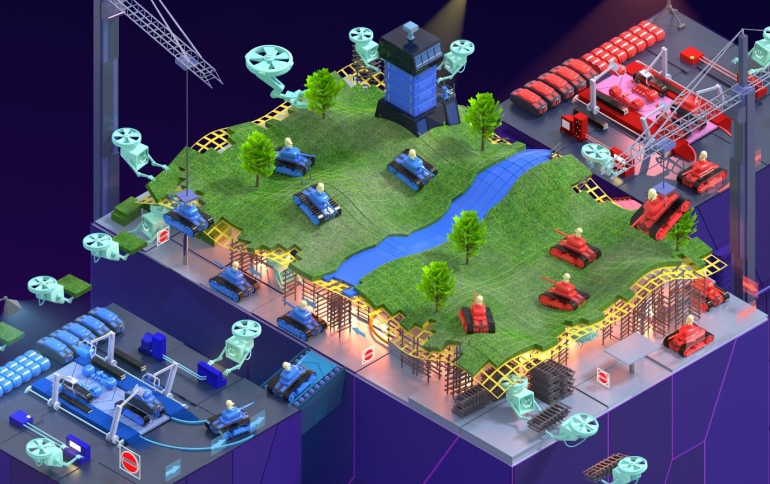
Microsoft Targets Game Developers With Microsoft Game Stack
Microsoft on Thursday said it is combining elements of its video game and Azure cloud computing businesses to target game developers also being courted by industry leader Amazon.com’s cloud services.
The company announced a new initiative, Microsoft Game Stack, in which plans to bring together Microsoft tools and services that will empower game developers to achieve more.
Game Stack brings together all of Microsoft's game-development platforms, tools, and services—such as Azure, PlayFab, DirectX, Visual Studio, Xbox Live, App Center, and Havok—into an ecosystem that any game developer can use. The goal of Game Stack is to help developers easily discover the tools and services they need to create and operate their games.
The cloud plays a critical role in Game Stack, and Azure fills this vital need. Azure provides the building blocks like compute and storage, as well as cloud-native services from machine learning and AI, to push notifications and mixed reality spatial anchors. Azure is already available in 54 regions globally, including China, and continues to invest in building highly secure and sustainable cloud infrastructure and additional services for game developers. Azure’s global scale is what will give Project xCloud streaming technology the scale to deliver a great gaming experience for players worldwide, regardless of their device and location.
While Azure is part of Game Stack, Game Stack is cloud, network, and device agnostic.
The next piece of Game Stack is PlayFab, a complete backend service for building and operating live games. A year ago, Microsoft acquired PlayFab, and today the company is bringing PlayFab into the Azure family. Azure brings reliability, global scale, and enterprise-level security; PlayFab provides Game Stack with managed game-development services, real-time analytics, and LiveOps capabilities.
PlayFab supports all major devices, from iOS and Android, to PC and Web, to Xbox, Sony PlayStation, and Nintendo Switch; and all major game engines, including Unity and Unreal. PlayFab will also continue to support all major clouds going forward.
Microsoft also announced five new PlayFab services, in private preview today:
- PlayFab Matchmaking- Matchmaking for multiplayer games, adapted from Xbox Live matchmaking, but now available to all games and all devices
- PlayFab Party - Voice and chat services, adapted from Xbox Party Chat, but now available to all games and for all devices. Party leverages Azure Cognitive Services for real-time translation and transcription to make games accessible to more players.
- PlayFab Game Insights - Combines real-time game telemetry with game data from multiple other sources to measure your game’s performance and create actionable insights. Powered by Azure Data Explorer, Game Insights will offer connectors to existing first- and third-party data sources including Xbox Live.
- PlayFab Pub Sub - Subscribe your game client to messages pushed from PlayFab’s servers via a persistent connection, powered by Azure SignalR. This enables scenarios such as real-time content updates, matchmaking notifications, and simple multiplayer gameplay.
- PlayFab User Generated Content - Engage your community by allowing players to create and share user generated content with other players. This technology was originally built to support the Minecraft marketplace.
Another component of Game Stack is Xbox Live, which becomes part of Microsoft Game Stack. Under Game Stack, Xbox Live will expand its cross-platform capabilities, as Microsoft introduces a new SDK that brings this community to iOS and Android devices.
Mobile developers will now be able to reach highly engaged gamers Xbox Live.
With the new Xbox Live SDK, mobile developers can focus on creating games and leverage Microsoft‘s trusted identity network to support log-in, privacy, online safety and child accounts.
New a la carte service offerings and no Xbox Live certification pass give mobile developers flexibility in how they build and update their games. Developers just use the services that best fit their needs.

Other components of Game Stack include Visual Studio, Mixer, DirectX, Azure App Center, Visual Studio, and Visual Studio Code, and Havok. In the coming months, as Microsoft works to improve and grow Game Stack, you’ll see deeper connections between these services as we unify them to work more seamlessly together.
As an example of how this integration is already underway, today Microsoft is bringing together PlayFab and these Game Stack components:
- App Center - Crash log data from App Center is now connected to PlayFab, allowing you to better understand and respond to problems in your game in real-time by tying crash logs back to individual player profiles.
- Visual Studio Code - With PlayFab’s new plug-in for Visual Studio Code, editing and updating Cloud Script just got a lot easier.
Microsoft competes against Amazon Web Services division to sell those cloud services. But it has been in the console gaming business with its Xbox device since 2001 and had 64 million users for its XBox Live online gaming service.
Microsoft faces competition in the game space from Amazon, which acquired gaming video service Twitch to let gamers watch each other battle online and GameSparks to provide back-end services to game makers.





















